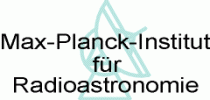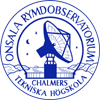LABOCA Calibration
Intensity calibration
Zenith opacities
The opacity of the sky is usually determined by skydip measurements. However, as of now, all official BoA releases underestimate the opacity resulting from the skydip reduction. The most likely reason for this is the assumption that the sky temperature equals the ambient temperature. This assumption overestimates the sky temperature and therefore underestimates the opacity. All opacities estimated by BoA are too low by a factor of about 1.3. For a more reliable opacity estimate, one has to combine the skydips, the taumeter measurements, and the calibrator fluxes.
LABOCA opacities page under maintenance.
APEX SciOpsAbsolute calibration scale
The raw data coming from LABOCA just have the detector voltage output as intensity. In order to obtain the intensity in astronomical units, the data have to be multiplied with a conversion factor. This conversion factor depends on the LABOCA bias voltage, which - after several tests - was fixed to 400mV. For this bias the conversion factor is:
f = 6.3±0.5 Jy/μVThis factor has been determined on the primary calibrators Mars, Uranus and Neptune during the commissioning period.-
LABOCA calibrators
LABOCA primary and secondary calibration factors search interface.Values in the table below based on the file $BOA_HOME_LABOCA/secondary-fluxes.py, dated 2009-08-23.
Source name RA (J2000) DEC (J2000) Flux [Jy]± sigma Alt name HLTAU 04 31 38.45 +18 13 59.00 2.0 ± 0.2 CRL618 04 42 53.60 +36 06 53.70 4.8 ± 0.5 V883-ORI 05 38 19.00 -07 02 20.00 1.4 ± 0.3 N2071IR 05 47 04.85 +00 21 47.10 9.1 ± 0.8 VYCma 07 22 58.33 -25 46 03.20 1.5 ± 0.1 VY-CMA CW-LEO 09 47 57.38 +13 16 43.60 4.1 ± 0.3 IRC+10216 B13134 13 16 43.15 -62 58 31.60 12.9 ± 1.3 IRAS16293 16 32 22.90 -24 28 35.60 16.1 ± 1.3 G5.89 18 00 30.37 -24 04 00.40 27.6 ± 0.2 J1800-241 G10.62 18 10 28.66 -19 55 49.70 33.0 ± 1.8 G34.3 18 53 18.50 +01 14 58.60 55.3 ± 3.7 G45.1 19 13 22.07 +10 50 53.40 8.0 ± 0.6 K3-50A 20 01 45.69 +33 32 43.50 14.7 ± 1.4 CRL2688 21 02 18.80 +36 41 37.70 5.5 ± 0.9
Pointing & Focus
LABOCA Pointing Model
We have established a pointing model for LABOCA, based on measurements of planets, secondary calibrators, and bright QSOs. The rms of this model is 2″ in azimuth and 4″ in elevations.
During an observing run, sources as weak as 600mJy can be used under good weather conditions to verify the telescope pointing.Focus
The focus settings in the three subreflector displacement axes (x, y, and z) have been verified by various measurements on Venus, Mars, Jupiter, and Saturn, and are found to be stable within ± 0.2 mm.
Beam shape & angular resolution
From beam maps on Uranus the angular size of the telescope beam was measured for individual bolometers. After deconvolution by the planet size we found:
The shape of the main beam is an almost circular Gaussian. At intensities below 3% of the peak, the beam starts to deviate from a Gaussian, with the first error beam pattern at a relative intensity of 1%. The support structure of the subreflector becomes visible at the 0.1% level.
The main beam area of the APEX/LABOCA beam is 420″² ± 11″², while the total beam area is 518″² ± 21″². This may lead to an overestimate of the total flux density of up to 20% for extended sources, and should be taken into account by the PI during the calibration of his/her data.
We provide a FITS file with the combined LABOCA beam pattern, based on these 30 Uranus beammaps: Laboca-beam-2007-11.fits.gz (courtesy of A. Weiß, MPIfR). Right-click on the link and then choose "Save link as...".
Note: A previous version of this section mentioned slightly different numbers. However, that numbers were obtained during the LABOCA commissioning, included less data sets (and only from Mars), and are therefore considered less reliable. The new numbers come from 30 Uranus beammaps obtained between 2007 and 2011.
Array parameters
For a multi-channel receiver, the array parameters include the relative offsets
of the individual channels as well as their relative gains. Both can be estimated
from fully sampled maps (for all channels) on strong compact objects.
We have summarized the array parameters for all observing periods from
LABOCA commissioning until now. The channel offsets normally are expected to
change only if physical work is done at the rerceiver itself (repair, upgrade,
or maintenance). However, the relative gains, as well as the properties of
individual channels (like cross-talk, excess noise, etc.) can also change
with every warm-up of the instrument. The gains depend also on the bias
voltages of the amplifier electronics boxes, which may change with time.




